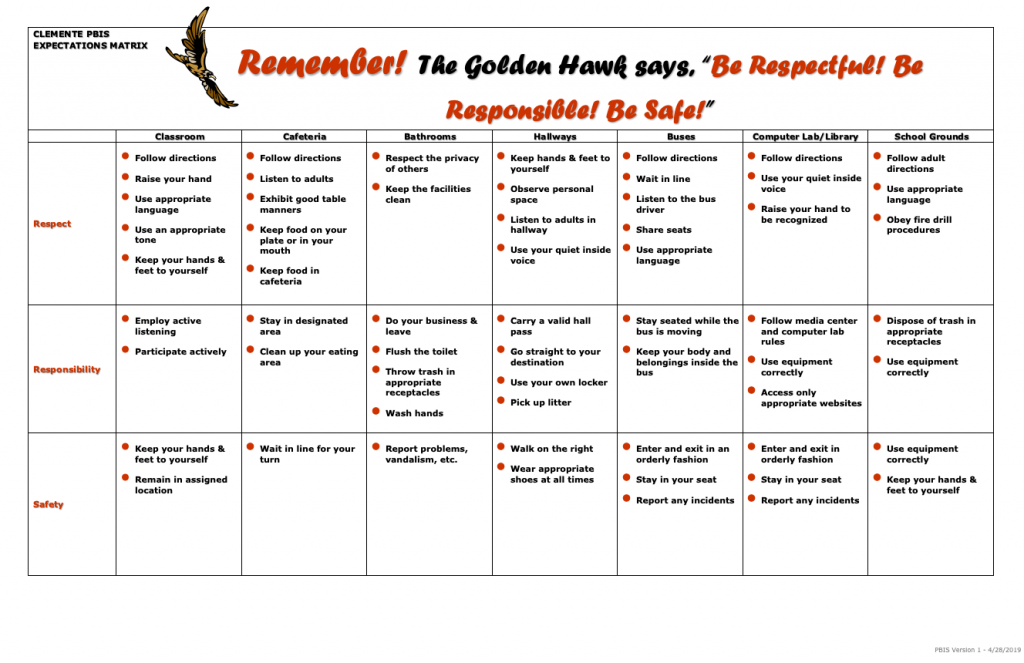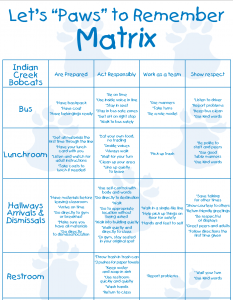There are three different options for how your school will develop classroom expectations and rules.
- Option 1: All classrooms have the same rules that are included on the Matrix: all-inclusive! Some schools opt to identify the same set of rules for all classrooms. Teachers in these schools have determined that these rules are sufficient to ensure appropriate behavior and are applicable to all classrooms.
- Option 2: All classrooms have the same set of basic rules that are included on the Matrix: teachers can add specific to their classrooms that align with schoolwide expectations. Some schools opt to identify the same set of basic rules for all classrooms, then allow teachers to develop additional rules to allow for the individual differences of the teachers.

- Option 3: Each teacher develops all his/her rules that align with the schoolwide expectations. Some schools opt to allow each teacher to develop all of his/her classroom rules.
| Schoolwide Matrix | Classroom Matrix | |||||||||||||||||||||||||
|---|---|---|---|---|---|---|---|---|---|---|---|---|---|---|---|---|---|---|---|---|---|---|---|---|---|---|
 |
|
Whichever option works best for your context, it is important to maintain the connection between the schoolwide expectations and the classroom expectations. When we simplify by having 3-5 basic big idea expectations that are consistent throughout the school, and then connect them to the classroom, we reduce the variability and increase consistency for everyone.
The 3-5 expectations are an example of Anchored Instruction. They’re the big rocks, the most critical big ideas, and then we teach students to generalize across settings with the rules for each location. The expectation is to Be Respectful – and here’s how you do that in the cafeteria, and here’s how you do that in the classroom.
Which option for developing classroom rules will be the best option for your staff?

